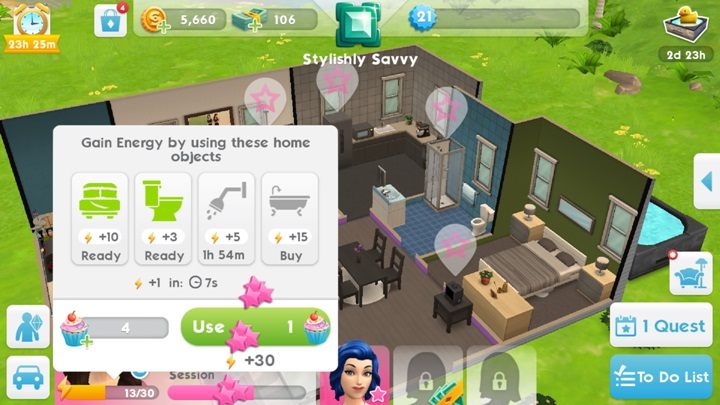This Is Not a Game’s section on free-to-play games was easily one of the most comical yet frustrating sections for me personally. I found myself laughing along with the puns being made but I also took note of the heavy commentary on capitalism and how games are warped to fit into a free-to-play shell.
Because we start off playing the original version of the game that has no currency aspects, the immediate comparison between the free-to-play and original makes their differences stand out. The free-to-play aspects of the game are meant to encourage behavior desired by the ones making money – essentially valuing duration of time spent in game, long-term play, and in-game currency. You aren’t allowed to access most aspects of the game without paying or waiting. For example, in order to wake up the main character, you first must be patient enough to gather enough money to purchase an alarm that will wake up your character. The capitalism aspect isn’t just apparent to the player, but also to the character as furniture is made purposely expensive so that the character won’t own any, making it the responsibility of the player to gather enough money to purchase furniture.

As for how this free-to-play spin affected my in-game play, I found myself paying less attention to the game as the story went on within this arc. I would mindlessly click on all of my vases and barrels to gather money while waiting for the character to dig up a chest or to finish talking to another character. I was no longer interested in the conversation or in the tasks of the game, but simply turned into a mindless clicker waiting to be granted achievements as my bank account’s value increased. The game drastically changed my values while playing – from being curious and exploratory to being sedentary and money-driven.
When I think of other games built within the free-to-play “genre” of sorts, like the Sims Freeplay on mobile or Mystic Messenger, they also encourage the values of waiting and collecting while changing the values of the player, or leading them to value certain things explicitly. In the Sims Freeplay, you get a certain amount of energy each hour, encouraging patience in the player as well as frequent returns to the app in order to embark on or complete tasks. In Mystic Messenger, you are asked to be constantly “on” as Hodge’s reading termed, constantly ready and waiting to respond to a text message or pick up a call from an in-game character – also encouraging patience, if not anticipation, for the game. Both of these game mechanics create a player that is anxiously returning to the game regularly in fear of missing out on some reward, whether it be in game money or relationship points. The free-to-play section in This Is Not a Game capitalizes on the player’s willingness to devote themselves to the game and fully lays out its cards on what free-to-plays value in an ideal player, or better yet, consumer.

https://guides.gamepressure.com/the_sims_mobile/guide.asp?ID=44070
Before I was asked to think critically about the games I played, I wouldn’t have seen the way I was being pushed in a certain direction by a game – speaking directly about both the Sims Freeplay and Mystic Messenger. This Is Not a Game has shone a light on my past experiences and motives within the free-to-play genre.

